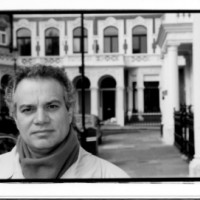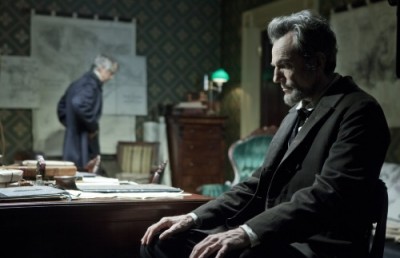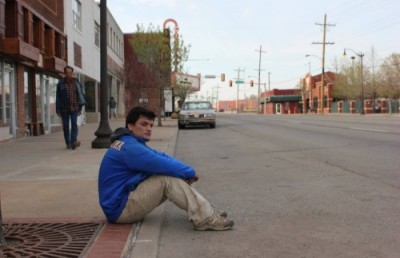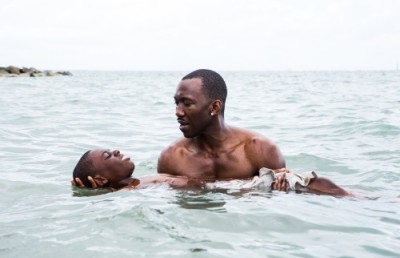Daffy Duck, or: The Generous Writer
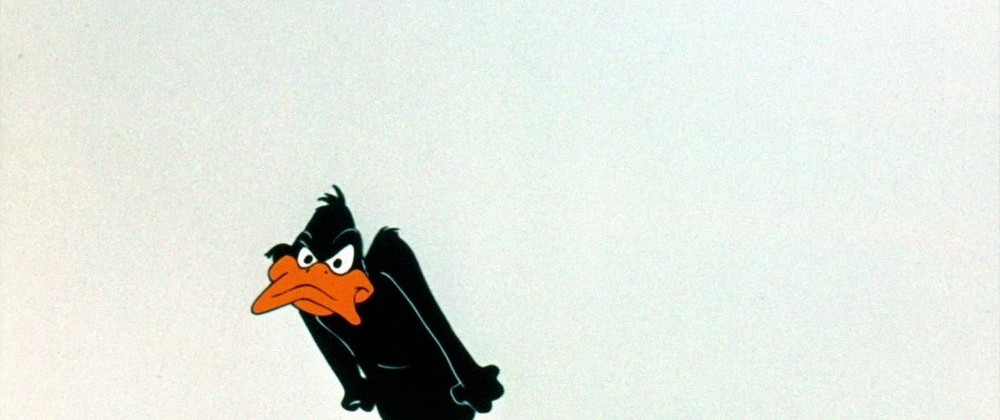
In 1953, Charles M. (Chuck) Jones made a short animated film, Duck Amuck , since deemed by the Library of Congress as “a culturally significant” film. In 1999, it was selected for preservation in the national Film Registry. Duck Amuck , running 6:56, was voted by 1,000 animation professionals to the number two spot on the 50 greatest cartoons of all time.
George Meredith writes that “comedy . . . was never one of the most honoured of the Muses” (5). Nonetheless, it offers a view that is as lofty and as poignant as anything that claims itself to be a solemn creation. Henri Bergson suggests that laughter exists only if one is disconnected with one’s emotional centre, writing: “Now step aside, look upon life as a disinterested spectator: many a drama will turn into a comedy” (63). The more a person is connected to his heart, the gloomier the universe appears to him. Bergson continues that “(t)o produce the whole of its effect, then, the comic demands something like a momentary anaesthesia of the heart. Its appeal is to intelligence, pure and simple” (63-64). For laughter to work, he advises, a sort of “secret freemasonry” is necessary. There must be complicity between the actor and the audience. Yet comedy is often incapable of crossing over from one social group to another.
Wikipedia defines Duck Amuck as a “surreal animated cartoon”. It isn’t. It is actually about the ethnic life-cycle. Jeffrey G. Reitz explains that this term refers to “an aggregate of individual experiences, to the process of immigrant adaptation over time and to the transition from the first or immigrant generation to the second generation and to subsequent generations” (125).
In this animated tale, Daffy is forced to walk through various locations; he wears different attire; speaks in contrasting voices; appears in a number of unrelated embodiments, and never out of personal choice. Daffy finds himself crossing a number of symbolic stations before he establishes his identity, no matter how fragmented this passing-identity might be to us viewers. Daffy jumps in as a musketeer out of a Dumas novel, declaiming: ‘Stand back, Musketeers. They shall sample my blade. Touché! Musketeers? En garde? My blade?’
But he is abruptly shocked to notice himself standing before a white screen, empty of a setting. He rushes out of the frame, only, immediately after, for his head to pop up at the bottom. And, like an actor caught off guard, he breaks down the fourth wall, and embarrassedly addresses the audience: “Whoever’s in charge here? The scenery? Where’s the scenery?”
A pencil enters the frame and draws a rural scene, a red and blue barn against a yellow sky. In jumps Daffy, still dressed as a musketeer. He repeats his monologue and, suddenly stops when he notices the scenery, mutters: “Okay, have it your way.” He rushes out and swaggers back, singing, “Old MacDonald”, but before he reaches the other side of the frame, the background gradually transforms into a winter landscape complete with igloo. Upset, Daffy comes to a full stop, props his arm on his hoe, and demands: “Would it be too much to ask if we could make up our minds?”
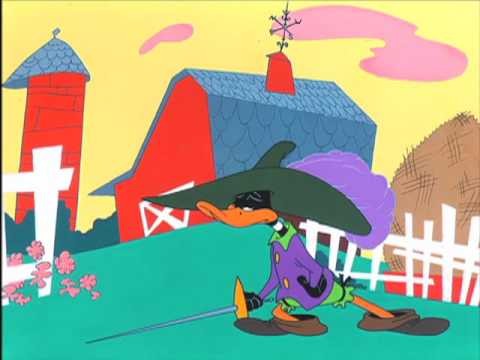
Neither the audience nor the unseen artist answers.
This duel continues for some time, with a series of unexpected results. At one point, Daffy becomes so exasperated that he calls it quits altogether. “I have never been so humiliated,” he mumbles to the artist responsible for the havoc.
At the end, we, the audience, will uncover the culprit, he who holds the trump card in his hand. The all-powerful trickster is none other than Bugs Bunny. But wait a minute. Let’s go back to square one. Daffy Duck and ethnicity?
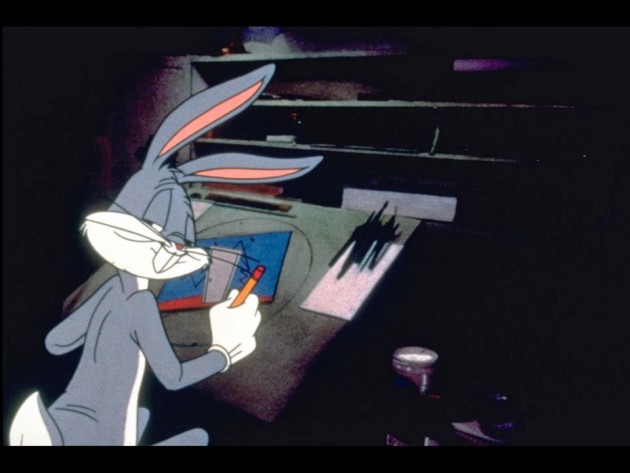
Duck Amuck was written by Michael Maltese. A not insignificant genius, this man. Maltese wrote many of Warner Brothers’ Looney Tunes cartoons. Three of the hundreds of cartoons he wrote were directed by Chuck Jones, and these films, and both Jones and Maltese, have been honoured by the Library of Congress. No small feat. Yet who, except the specialist and the cartoon fanatic, could identify Maltese in a line up of artists?
Not much information can be found on Michael Maltese on the Net. A few photographs, a few lines here and there. But caution please. Look —there is a photograph of a young man. No, that is not him. That one, that twenty-two year old Michael Maltese who, with his girlfriend, killed his parents in New Brunswick, New Jersey in 2008. That’s not the Maltese we’re talking about.
No, the storyboard artist and writer by the name Michael Maltese was born on February 6, 1908, in New York City. His Italian-born parents, Paul and Concetta, arrived as immigrants a few years earlier. In 1936, Michael married Florence Sass, and together begot a daughter named Brenda.
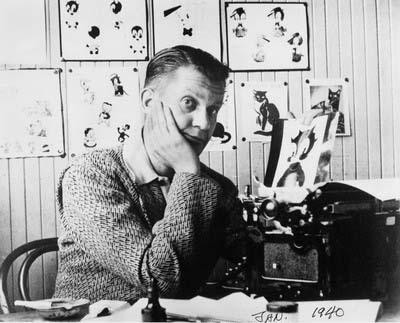
Michael Maltese
Maltese applied for a job at Disney, but never got it. Instead, in 1941, he went to work for Leon Schlesinger Productions, an independent company which produced the Looney Tunes for Warner Brothers. Three years later Schlesinger sold the company outright to Warners, and Maltese stayed on until 1958. He then moved on to work at Hanna-Barbera Cartoon Studio, where he helped create the Flintstones , Huckleberry Hound and Quick-Draw McGraw series. Maltese died of cancer on February 22, 1981.
A parenthesis opens here. (Joseph Barbera was born at 10 Delancey Street in New York’s Little Italy, which is in the Lower East Side section of Manhattan. His immigrant parents, Vincent Barbera and Francesca Calvacca, were born in Sciacca, Agrigento, Sicily, Italy. Joseph grew up speaking Italian. His family moved to Flatbush, Brooklyn, New York when he was four months old.) Parenthesis closed.
Dare I now advance the idea that Maltese used his position to elaborate a cunning strategy to express cultural pluralism? He did just that.
Maltese was born when Teddy Roosevelt was president (1901-09). After Roosevelt left office, he gave a speech stating: “There is no room in this country for hyphenated Americanism.”
The dichotomy between cultural pluralism and the melting-pot is not new. However, one must remember that such concepts do not fall from heaven. They are constructs.
Israel Zangwill wrote the play The Melting-Pot in 1908, the year Michael Maltese was born. The metaphor of people melting into one new American man was basically the creation of one man, Israel Zangwill.
At the opposite end, we find Randolph Bourne and Horace M. Kallen. Between 1911 and 1918, Bourne established through his radical essays the idea of a “trans-national America”, which in his mind was a “federation of cultures”. Already, back in 1915, Bourne was lambasting the idea of the melting-pot as being a return to the past: “As long as we thought of Americanism in terms of the ‘melting-pot’, our American cultural tradition lay in the past” (256). In that same essay, Bourne used another interesting term: “post-modernism”! That was back in 1915!
For his part, Horace M. Kallen was just as radical as Bourne. “Cultural pluralism” is a concept that Kallen opposed to the melting pot, which he equated to a Kultur Klux Klan:
Cultural pluralism is possible only in a democratic society whose institutions encourage individuality in groups, in persons, in temperaments, whose program liberates these individualities and guides them into a fellowship of freedom and cooperation. The alternative before Americans is Kultur Klux Klan or Cultural Pluralism (35).
Michael Maltese chose to be part of the Bourne-Kallen camp. If Maltese did not scream his allegiance out like the two intellectuals, his stride was nevertheless just as audacious. He chose to describe and tag the cultural adventures that he saw would make up the future of America.
A scholar can spend forty years attempting to unearth the parameters of identity, no doubt. We are gathering and counting cultural artefacts when we should be coming up with major mathematical equations about immigration and post-immigration. As Marco Micone so rightly reminded us in his play, Gens du silence (Voiceless People) : “If emigration could have helped the working class to emancipate itself, it would never have been invented.”
Of course, the extracting of the common denominators that binds one individual to another who together form a community, and the bridges that link one community to another is not easily snaffled from a society that fights hard to conceal and destroy anything that could transform it. The elements and patterns constituting culture can be gauged by mathematics. If a mathematical equation can represent a torus (the everyday doughnut), thanks to Goro Shimura, which would lead Andrew Wiles to prove Fermat’s Last Theorem, then there is no doubt in my mind that cultural pluralism can be quantified by a complex sequence.
To my knowledge, few ethnologists have yet assessed such figures in the way Pythagoras or Einstein have done in their respective fields. Surely, fear stops many of us from becoming mathematicians. “Why bother?” yawns the scientist, feet laid out on the coffee table, falling asleep in front of the TV just when they begin to project a film that provides some of the worst sort of intolerance about the community he belongs to. “Why complicate matters when everything can be so simple?”
As Walter Rauschebusch wrote in 1914, “Where love is lacking, the atmosphere becomes clouded with suspicion and misunderstandings, and it becomes increasingly hard to see the truth, even for those who desire to see it” (31).
Culture is far from being evident. Culture used to be endogamous, cut off geographically, religiously, linguistically. Mountains, lakes, valleys, the lack of horse power, the absence of any form of adequate transportation discouraged even the most courageous of drifters. Cooped up in the comfort of the predictable might seem convenient for a period, but what is ineffably reassuring rapidly becomes ostracism. Not only for oneself, but also for the other. Snuggled in his kitchen, the father of a divorced family soon displays communicational narrowness. Instead of looking out of his window, he begins to imagine his troubled past as a world of grandeur. Nostalgia only temporarily wards off the frontal attacks of cultural assimilation. After allowing the solitary to live a couple of decades this sort of “high life” as a happy ethnic, the customs officer struts back, knocks hard on the immigrant’s back door, and pulls out the list of restrictions, or what is ironically called the Charte de valeurs (Charter of Values).
Obviously, for nationalists, “the pluralist phase”, to quote Reitz, “is only a passing phase, part of adjustment. Later, assimilation will occur unless acceptance is refused by the dominant group, and the dominant group imposes a shared set of instrumental needs on ethnic group members” (27). In this way, the complete acceptance of ethnic communities by the host society depends on cultural assimilation. In other words, cultural practices of an ethnic group must change to meet those of the host society. Countries prescribe their legal institutions, workplace mores, dietary customs, religious practices and sentimental superstitions with savage fervour. Fortunately, since the beginning of time, whether it is the stories in Gilgamesh or the Torah, communities of foreigners and interlopers rebuff tribal ignorance and intolerance with stubborn cosmopolitan intelligence. Much like Daffy Duck.
Regardless of the landscape Bugs Bunny draws, Daffy prevails unfailingly. When the block of blackness on which the terrible words THE END drops over the white screen, Daffy uses the stick drawn by Bugs to prop up the block like a curtain. When the film staggers to a full half stop, dividing the screen in two, Daffy in the bottom frame accuses the Daffy of the top frame of being a fake. But Daffy remains Daffy whether he is a musketeer or a scuffling dandelion. Daffy adapts to the environment, always ready to play the role assigned to him. He borrows, tailors, and relays the moil to others, in this case, the audience. It is the audience who ultimately has to pay the price of the fumbling. The transfer delimits an on-going process that defines culture. This centrifugal motion is not synonymous to relinquishment. It is a translation.
Preposterous, you might be saying to yourself. How can he compare Daffy’s becoming to translation? Why turn Daffy into an ethnic metaphor? Yet this symbolic outcome is logical, and such findings the logical outcome of a conscious strategy. Michael Maltese prolongs self and identity and demonstrates metaphorically that no external deadening effort can undermine identity or creativity. Daffy might be subservient to Bugs Bunny’s overpowering machinations, but Bugs can neither hamper Daffy’s will to artistry nor eliminate his sense of otherness. Daffy Duck survives Bugs Bunny’s intrigues by putting on the actor’s mask while he crosses the four seasons and the four elements of transformation. Being it summer, winter, spring or fall, water, fire, air, or earth, Daffy never allows himself to forfeit his beingness. When, at one point, Bugs erases Daffy totally from the screen, Daffy keeps on being as his bodiless voice: “Where am I?” he asks. He does not ask “Who am I?” The who-he-is is independent of where-he-is . The show must go on.
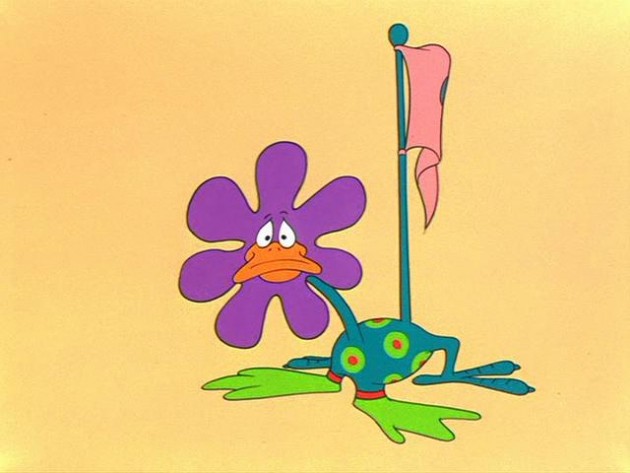
“What about some scenery?” Daffy commands. Daffy loses his temper, but the outward symbolization does nothing to who Daffy is. What in fact endures? His love of community. He keeps on interacting with the audience. All Daffy requests is reciprocal love. Again, Rauschenbusch writes: “In demanding love, he demands social solidarity. Love is social instinct, the power of social coherence, the sine qua non of human society” (14). When there is no love, Daffy feels he is a hireling for he who controls his life. And Daffy is not bashful to tell the audience that love has failed. “Who is responsible for this?” he asks. “Who are you?”
Notice that it is never “who am I ?”, but “who are you ?” So who are you? A mittened hand suddenly appears on the screen, holding a yellow pencil. It is Bugs Bunny smiling at the audience. The audience Daffy was talking to is reduced to another cartoon character. Gently, the semantic perspective splits in two, widens connotatively. The audience is not Bugs Bunny. The two were one, but now they divide into two separate entities. It was not the audience who was the jester, but Bugs Bunny. The audience is relieved. It is not guilty of any wrongdoing. Bugs Bunny is the culprit.
Bugs snickers, “Ain’t I a stinker?” A stinker. The Oxford Dictionary defines the term as being “a person or thing that smells very bad,” and “a contemptible or very unpleasant person or thing”. This auto-definition is astonishingly confident; Bugs Bunny’s sureness contrasts with Daffy Duck’s hesitancy.
It is not surprising that it is this stinker, this unpleasant character, that should be controlling Daffy Duck’s being and work. The enslaved actor impatiently waits for his role. Not from the director, but from another actor. There is a clear indication of bullying going on. Bugs does not extort one role from Daffy, but a multitude of roles. So many roles in reality that Daffy’s masks no longer stay put. For every setting, a new mask is prescribed. For every fallen mask, a new identity is summoned. Curiously, Bugs Bunny’s lordliness facilitates a stripping of Daffy Duck’s ritualistic garments. Daffy’s soul is laid bare for all to see. Daffy gets erased.
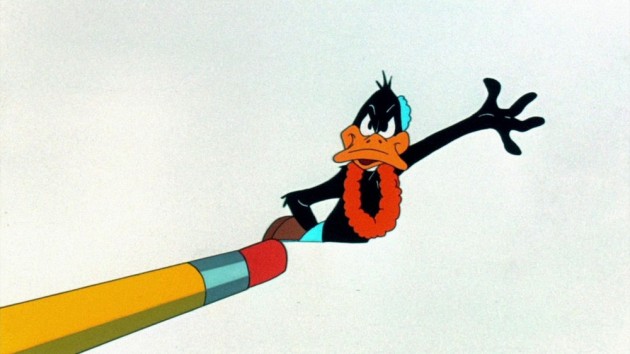
Here is an entity that slides out of symbolism. This a-symbolic presence provides Daffy with essential meaning. His voice and his beingness escape the physical garrisons of whatever it is that cannot be altered. Beneath, there is emptiness, and it is this insubstantiality, paradoxically, that embodies his identity.
Daffy’s body can be itemized; his spirit, however, cannot be touched by Bugs Bunny. This unfolding of character-defining dimensions, this unreeling of narrativity, this enlargement of symbols, inevitably creates a “mirror effect”, or what Christian Metz more precisely called the mise-en-abîme . This is the story within the story within the story construction. Moving from a variety of masks to non-entity, to nobodyness, to the non-person, the un-person, the sliding from materiality to immateriality, carries Daffy straight to pluralism, to the new baroque that ultimately defines the Italic. We are not talking of trans- nationalism , but total beingness. The opening up to a multitude of vanishing points allows for a multi-dimensional self-awareness unique to ethnicity. And it is important to understand that ethnicity runs counter to all forms of nationalisms. The weakness of ethnicity is what gives it its strength.
Linearity and the convergence to a single moment, to a single crossing point, is outdated, be it transcultural or transnational. The so-much-adored renaissance mode is a quest for neo-classicism, a longing for strong centres with strong cultures. The Italic is not nationalism. It is not even culture. It is a non-culture. It cannot be a renaissance. It is a voice in the desert. Why would we of the twenty-first century want to recreate what had been created so well by the Greeks and Romans? Why would we want to rely on a single point of view, which delimits our vari-layered perspectives, which enables to grasp in one instant the powerful onrush of decentralization? Those who soar beyond singleness multiply their chances of survival. This new kind of baroque is a multi-levelled building. Life stories and images of glorified pasts removes from ethnicity its historical meaningfulness. These narratives can be quantified. Taken alone they are voided of the magic. What lessons can be learnt from these secluded stories? Whatever aspects not analyzed and tagged become endangered forever. We cannot let the loss of a person’s story destroy the historical moment. What we label properly today affects the life-cycle of a community. The task of artists, scholars, scientists, and teachers is to provide tools for agency. And what better way is there of attaining agency than by translation?
Translation is one way of bridging one culture to another, but also combining the different expressions of a single culture found in different locations. Translation allows for the bridge to become an entity unto itself. It is not culture A + culture B. It is culture A + culture B that are lifted into a separate entity. They do not disappear into culture C. They are raised to A1, to B1, forming a spiral of cultures, a building with many stories, with many cultures. To use an image from C.S. Lewis, what advocates the natural, the Bios , should be lifted to the absolute spiritual dimension, the Zoë. “A man who changed from having Bios to having Zoë, explains Lewis , “would have gone through as big a change as a statue which changed from being a carved stone to being a real man” (140).
Not a melting-pot, but cultural pluralism. Not as renaissance, but neo-baroque.
Pluriculturalism.
In Canada, fewer than one hundred translated books per year are published. This means that the majority of the literature produced in this country is self-expression. American writer and translator Edith Grossman relates how in “the United States and the United Kingdom, for example, only two to three percent of books published each year are literary translations. In other countries, like France or Germany, Italy or Spain, and in Latin America, the number is anywhere from twenty-five to forty percent” (27-28). Maurice Friedberg believes that the state of translations yields “a reliable barometer of a country’s political moods” (16).
Why have Italian-North American writers, for instance, who operate in as many as three, four, five languages a day, done so little translating? Why wait for inspiration? Translate a foreign writer while waiting for inspiration to come. The dearth of translation proves that many still do not believe in themselves as writers, and even less in teamwork. This sluggishness hides selfishness. Our desperate need for love, for curiosity, for self-effacement, can be fulfilled by bridging with other works.
The writer who puts on the mask of the translator is like Daffy Duck putting on a new mask. Daffy Duck tells us that the mask does nothing to the Voice he is. The writer must give himself the duty of interacting with the worlds around him. Altruism permits otherness to flourish in more than one place at a time. One language is like being Bugs Bunny in this Duck Amuck . (I do not mean to diminish Bugs Bunny who plays greater roles in other cartoons. Maybe that is what makes Bugs Bunny such a great actor. He is able to play the good and the bad rabbit.) Language can be a stinker of a bully. But, through translation, the Italic writer stimulates cultural comprehension. The mature Italic translator must be shrewd, wise, generous. He must be an educator, an actor, a manipulator of masks. Without this sacrifice towards the other, isolation is certain, disappearance assured. “Love establishes the fullest intellectual contact with the world about us” (38). Better to disappear like Daffy than to drown in the lake embracing one’s reflection, like Narcissus.
Bibliography
Aczel, Amir D. Fermat’s Last Theorem: Unlocking the Secret of an Ancient Mathematical Problem . New York: Delta Publishing, 1996.
Bergson, Henri. Laughter & _ An Essay on Comedy_ by George Meredith, New York: Anchor Books, 1956.
Bourne, Randolph. The Radical Will. Selected Writings: 1911-1918 . Edited and with an introduction by Olaf Hansen. Berkeley, CA: University of California Press, 1992 (1977).
Grossman, Edith. Why Translation Matters . New Haven, CT: Yale University, 2010.
Kallen, Horace M. Culture and Democracy in the Unites States . With a new introduction by Stephen J. Whitfield. New Brunswick, NJ: Transaction Publishers, 1998 (1924).
Lewis, C.S. The Joyful Christian . 127 Readings. New York: A Touchstone Book, 1996 (1977).
Meredith, George. An Essay on Comedy & Laughter by Henri Bergson_ . New York: Anchor Books, 1956.
Micone, Marco. Voiceless People . Montreal: Guernica Editions, 1984.
Rauschenbusch, Walter. Dare We Be Christians? The William Bradford Collection. Cleveland: The Pilgrim Press, 1998 (1914).
Reitz, Jeffrey G. The Survival of Ethnic Groups . New York: McGraw-Hill, 1980.
Schulte, Rainer, and Biguenet, John, eds. Theories of Translation: An Anthology of Essays from Dryden to Derrida . Chicago and London: The University of Chicago Press, 1992

